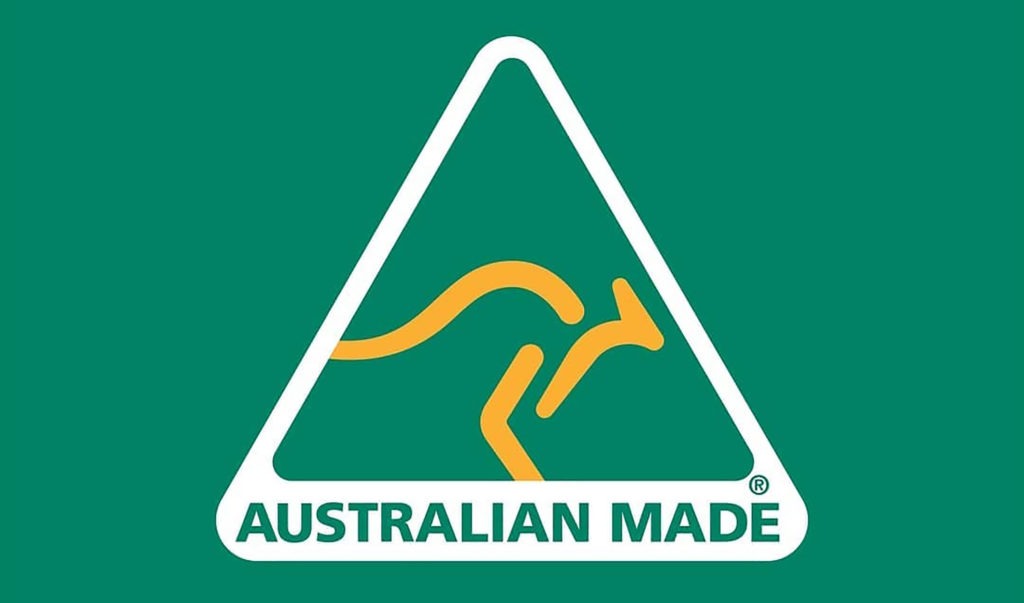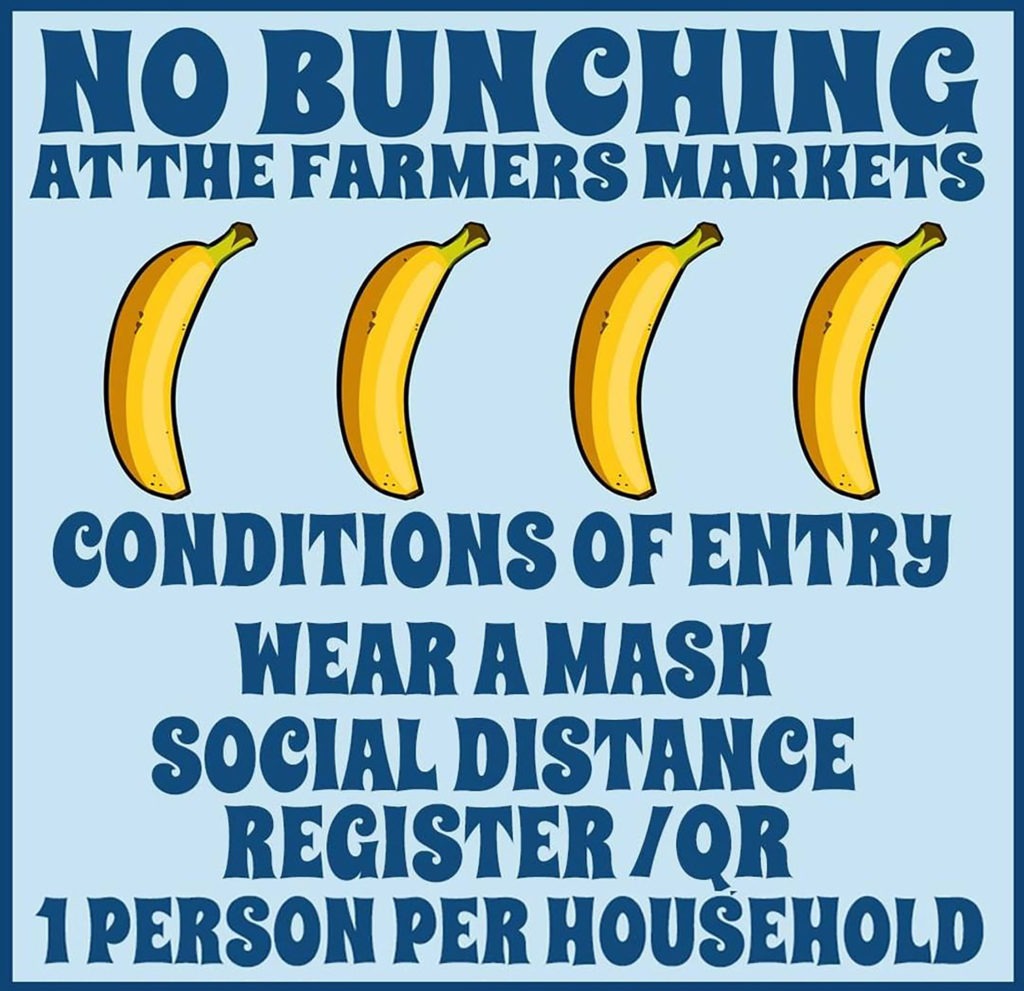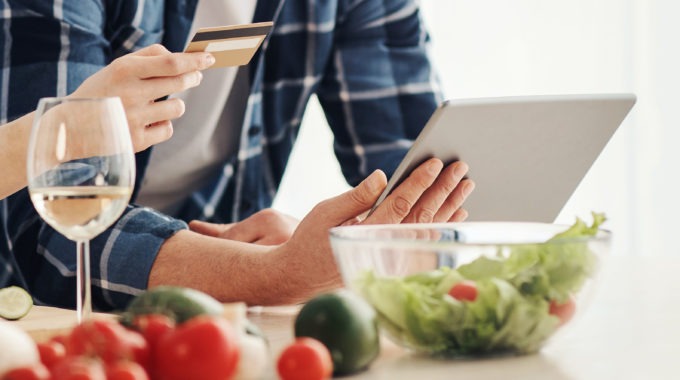COVID consumers: 2021 habits & trends
Unless you’re living the good life in a no-COVID zone like WA or Tassie (hi guys, how’s the freedom?), you’re likely to be either currently stuck in lockdown or just emerging from one, with some restrictions still in place. All this closeted living has obviously led to a few bad habits, but there have also been some positive changes in consumer behaviour, which some experts believe could be here to stay. Eativity takes a squiz at what’s been going on in Australian shopping baskets, markets and kitchens during this latest round of lockdowns.

We’re still cooking more
Just like last year, many locked-in Australians are spending more time in the kitchen. And this year there’s been a dramatic increase in the amount of time we’re spending on food and cooking sites as we look for something besides sourdough to try out in the kitchen. (Last year, sourdough was the second most-googled recipe… after homemade hand sanitiser). Nielsen digital media ratings data shows there was a 31 percent increase in the amount of time Aussies spent on food sites in July compared with the first week in March.
A recent CommBank consumer insights report found that Generation X (born between 1965 and 1980) were the most likely to be cooking more at home. Analysis by HelloFresh found that the most googled cuisinees have been Mexican, Italian, Asian and Middle Eastern.
In a sign that we must be getting really bored, one food that’s on the rise this year is the humble choko. According to celeb chef Matt Preston, there’s been a huge surge in online choko interest from foodies looking for something different to dish up. And Aussie choko growers (yes, they still exist) have also seen a steep rise in sales and demand.

Delivery dilemmas
Many of us are still turning to home-delivered meals. Research from Roy Morgan has found that more than 5.5 million Australians used meal delivery services in the past year. That’s a 19 percent increase on the previous year. But it’s younger generations who are most likely to use these services. Older generations are far less likely to order in. Maybe they’re busy boiling choko? (Okay, to be fair, it’s actually not that bad. Try it fresh in a stir fry or salad. Or fry it or bake it, stuff it or add some to a soup or stew. It may surprise you.)
It’s true that the convenience is great, but these services aren’t quite so good for the delivery guys. Data from Uber Eats riders provided to The Guardian Australia found that some riders are earning as little as $5 for individual deliveries that cross multiple suburbs.
Menulog has announced that it’s moving away from the individual contractor model that all these services use. instead, it will head towards directly employing workers. This provides a guaranteed minimum wage, leave entitlements and superannuation. However, the company says this is a “transition” that could take several years.
It’s also worth noting that delivery services charge restaurants a commission. So if you can order direct from a restaurant – and pick it up yourself if they don’t deliver – this is the best way to enjoy the convenience of takeaway while also supporting the hospitality industry.
A final word of advice: if you do choose to use a delivery service, always tip your rider in cash. That way the corporation doesn’t take a slice of it.

How Australians are shopping
According to Australia Post, online shopping is booming. For the first time in Australian e-commerce history, more than nine million households shopped online in the last financial year, with home and gardening supplies seeing the biggest uptick in online purchases.
Global consumer research and insights agency Focus Insights has found that 25 percent of shoppers have bought groceries online in the last 12 months. Sixty-three percent of those will stick with a single retailer for their online groceries. Research by Finder puts that figure higher. They found 33 percent of Australians have started grocery shopping online following the initial lockdowns in early 2020. The top three reasons for people choosing to shop online are to avoid crowds, save time and reduce their risk of catching COVID. All eminently sensible, but there are other options, as you’ll find out further below.
In good news for our health, Focus Insights also found that we’re buying more fresh food and less unhealthy food like soft drink, lollies and chips. But while the majority of shoppers still prefer to buy their fresh fruit and vegies as loose items, there has been a 10 percent shift over the last 12 months towards packaged fruit and veg. Part of this change in consumer behaviour is down to paranoia that they’ll catch COVID from unpackaged produce. However, some also opt for this less planet-friendly option because it means they can get in and out of the shops faster. Presumably while holding their breath.

Rooting for the home team
Some more good news: since COVID, we’re more likely to buy Australian made. CommBank found that the desire to support Australian online retailers and manufacturers, local suburban shopping centres and neighbourhood stores is on the increase. And one of the biggest changes in online shopper behaviour during the pandemic has been an increase in the volume of purchases made from online retailers located in Australia.
This behaviour looks set to stay. Of the 49 percent of consumers who made the move towards domestic online retailers, 52 percent say they’ll continue to do so.
Brisbane-based digital marketing agency Anchor has also found that many consumers are now much more focused on buying locally made products from brands they trust. Australian-made and owned brands are now increasing in popularity. COVID has made the average Aussie more aware of food supply chains and the importance of our own food producers. This has led to a greater desire to seek out and support local businesses.

Moral matters
Consumer insights company Toluna has found shoppers are now more likely to consider a brand’s ethics and values, along with price and value for money. More consumers are now seeking out brands and products that hold values they respect. Sixty-nine percent of shoppers now go out of their way to engage with brands which align with their values. Thirty-four percent say they’ve stopped supporting brands with values they don’t hold.
Sustainability issues are also more front of mind. While there has been an increase in the number of people buying pre-packaged fruit and veg, half of all shoppers are now actively trying to buy foods and drinks with less plastic packaging. Almost half (45%) now prioritise brands that promise environmental friendliness. And the vast majority (82%) of Australians valuing sustainable packaging, with environmental concerns driving their purchases.
For one in five of us, sustainability now defines our choice of retailers, brands and products. This search for more sustainable and ethical options has led to almost half (49%) of all Australians looking beyond traditional retailers and supermarkets. Instead, we’re choosing to shop for products online, and at boutique eco-stores and farmers’ markets.

Close call
Farmers’ markets have been deemed an essential service during lockdown. They sure make for a more enjoyable shopping experience than a trip to Coles or Woolies, where you have to navigate your way around hordes of cranky customers who may take a swing at you at any moment. Farmers’ markets are not only a great way to support local producers and gain access to fresh, seasonal, sustainably produced food; they’re also outdoors, making them preferable to crowded supermarkets, which see many cases of COVID transmission.
However, even some of our farmers’ markets have been having pandemic problems of late. Rising community tensions and uncertainty in the Northern Rivers region of NSW recently led to five farmers’ markets making the difficult decision to close for a week.
A snap lockdown in the region was called after a Sydney man infected with COVID spent five days in the area. All while not complying with QR code check-in requirements. This meant it was difficult to know exactly where he’d been, and who might have been exposed. General anti-conformist sentiment in the area only added to the problem. This has made it harder to guarantee the safety of market customers, staff and volunteers.
“Where we are, there are lots of ‘anti-maskers’,” says Allie Godfrey, Market Manager of Mullum Farmers’ Market in Mullumbimby, one of the markets that closed temporarily. “There’s also a large part of the community that is conforming. But because there were people that weren’t wanting to conform, we felt it was unsafe to carry on until we could take time to regroup and defuse some community tension. It was getting quite tense.”

Market forces
Godfrey says that one reason why it was such a difficult decision to cancel was because this would force people into supermarkets to buy foods. This ultimately defeats the dual purpose of providing a safer shopping option and a more sustainable one.
“Everyone here is anti-establishment. We get it. But it seems crazy that then people are going be pushed into supermarkets where you’ve got all the big food brands that are directly responsible for climate change,” she says. “And while I respect differences of opinions, we just feel that if you really can’t wear a mask? Send someone else.”
The markets have all since reopened. Byron and Bangalow markets are now enforcing a “no mask, no entry” rule. Security guards will also be in place to ensure people comply with masking and check-in. But Godfrey says the Mullum Markets won’t take things this far.
“We all have COVID plans in place,” she says. “Stalls are spaced out, sanitising stations are everywhere and we have people on all the entrances now asking people to check in and to wear a mask. But the problem is, you’re given these guidelines to work within, but they’re toothless laws. You can’t enforce them – only the police can enforce them.
“Last year, we didn’t have a problem with masks because we didn’t have to wear masks. But now, we’re finding it’s very divisive in our community, which is the saddest thing of all.
“I thought that even people with very different viewpoints would still trying to respect our wishes in order to keep the security of our sustainable food systems alive. Rather than being forced to shop at the ones that are directly responsible for climate change.”
If you’d like to get away from the supermarket crowds and the computer and enjoy a bit of fresh air and genuine human contact, try supporting your local farmers’ market. Pack your reusable shopping bags, grab a mask and find your nearest market here.









